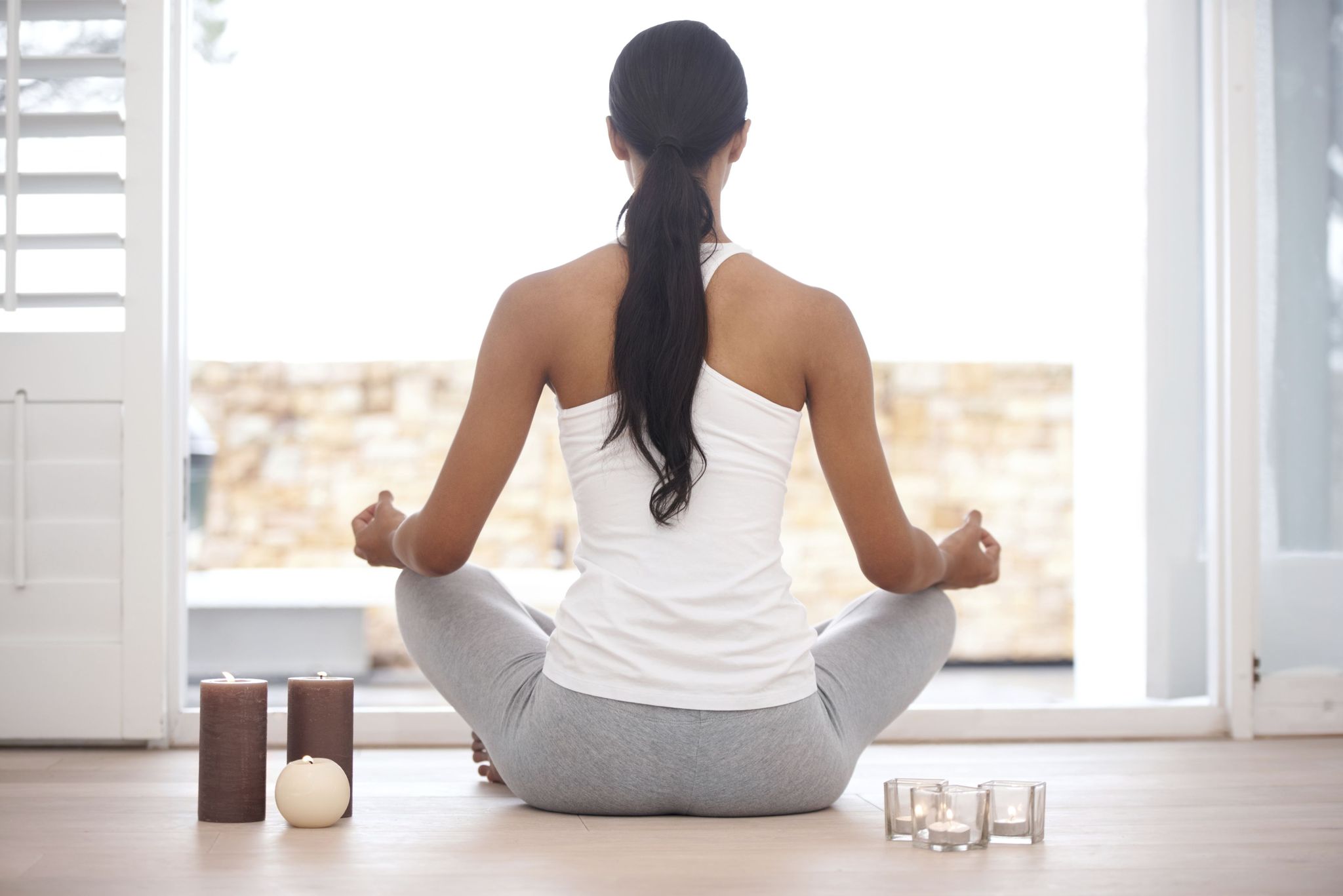Play
Just Breathe
Georgie Gordon ponders the best ways to achieve mindful relaxation in a world of ever increasing pressures and anxieties. Take a seat, relax and rejuvenate
February 9, 2020
Georgie Gordon
February 9, 2020There are many different forms of meditation practice, from sitting in silence and focusing on breathing, to following a guided meditation or repeating a mantra, however, the desired outcome is the same – to train attention and awareness to achieve a mentally clear and emotionally calm state.
People mediate for different reasons as there are many benefits, some use it as a way to reduce stress, others for self-discipline, to break bad sleep habits, increase pain tolerance or just to have a more positive mood and outlook on life.
For whatever reason it’s practiced, or even how, there’s no denying that learning to mediated is a beneficial tool for mental health and wellbeing. Studies show that mindfulness mediation decreases anxiety and depression, lengthens attention span and can even reduce age-related memory loss. Not only that, there is research that says the rest we get during mediation is deeper than gained in sleep. That is, 20 minutes of meditation can be equivalent to seven hours of sleep.
Despite the many benefits, meditation is often dismissed as too hard, too time consuming or as new age hype. But you don’t have to climb a mountain, own crystals or even have a lot of time on your hands to practice. The first step is to find a form of meditation that suits you. Here are three of the most commonly practiced techniques:
Transcendental Meditation
This form of mediation has a diverse following and seems to be the preferred technique for Hollywood movie stars, supermodels and professional sports players with everyone from Clint Eastwood to Gisele Bundchen practicing this mantra driven form of meditation. Originally established as religion in the 1950’s by Indian guru Maharishi Mahesh Yogi, it was quickly adopted by the western world. The desired result is ‘a simple effortless flow of the mind towards happiness’ achieved in two 20-minute sessions a day. The basic premise is repeating a mantra (a word with an attached meaning) until it fades away and you reach a blissful silence and higher state of mind.
Zen Meditation
It is believed that Buddha first reached enlightenment while practicing Zen meditation and discovered true happiness comes from who we are not what we have. Having a quiet and peaceful place to meditate is important for this practice which is usually done in the lotus pose (sitting cross legged with each foot on the opposite thigh). Eyes stay open and directed ahead but without focusing on any one thing. The idea is to then breathe slowly and deeply though the nose with extra focus on the exhalation. Focusing on this breathing is supposed to help one reach a deeply relaxing, meditative state.
Kabbalah Meditation
Originating in Judaism, Kabbalah is thought to be around 4000 years old although for some of us it only came to light when Madonna started practicing and extolling the virtues in the mid noughties. Celebrity endorsements aside, Kabbalah meditation is supposed to guide you to a more fulfilling life by accessing a higher plane of consciousness. Prior to 1969 it was only taught to married Jewish men until Rav Philip Berg, an American Rabbi, opened it up to everyone regardless of race, sex or religion and it became a global phenomenon. The daily meditation practice of Kabbalah is less structured than other forms. A quiet place is key but instead of silencing the mind, the idea is to talk with god and express fears, gratitude and request guidance. Even meditating for five minutes a day is beneficial. Here’s a quick guide. And remember it’s called practice for good reason, the more you do it, the better you will become.
Five Minute Breathing Meditation
1. Set a timer.
2. Sit comfortably, in an armchair or cross legged on the floor, whatever works best for you.
3. Close your eyes and take a few deep breaths from your diaphragm and feel your body relax as you breath out. Try to visualise the tension leaving you, starting from your head and finishing at your feet. Feel the stress melting away with each deep breath.
4. Clear your mind. Try to focus on just being, as thoughts enter your mind gently acknowledge them and then let them drift away, always returning to the present moment. Focus on constantly keeping your mind in the now rather than trying to clear all thoughts.
5. Continue this for five minutes, focusing on the sensations in your body, your breath and letting go. Return to your day relaxed and refreshed.
Get Online
Finally, as with everything else in life these days there are numerous apps to help with mindfulness and meditation, there are guided meditations and mindfulness sessions where a facilitator talks you through the technique or induction process. There are also simple music sessions during which calming music is played. Try the Insight Timer or Headspace apps or go to themindfulnessmovement.com for any number of free YouTube videos and pod casts. Most of these specify duration depending on how much time you’d like to devote to your session. They also are tailored to meet any number of chosen outcomes, from managing pain, encouraging sleep, reducing anxiety and stress, to increasing confidence. Just plug in your headphones and drift off.
© 2024 Pacific Island Living Magazine all Rights Reserved
Website by Power Marketing